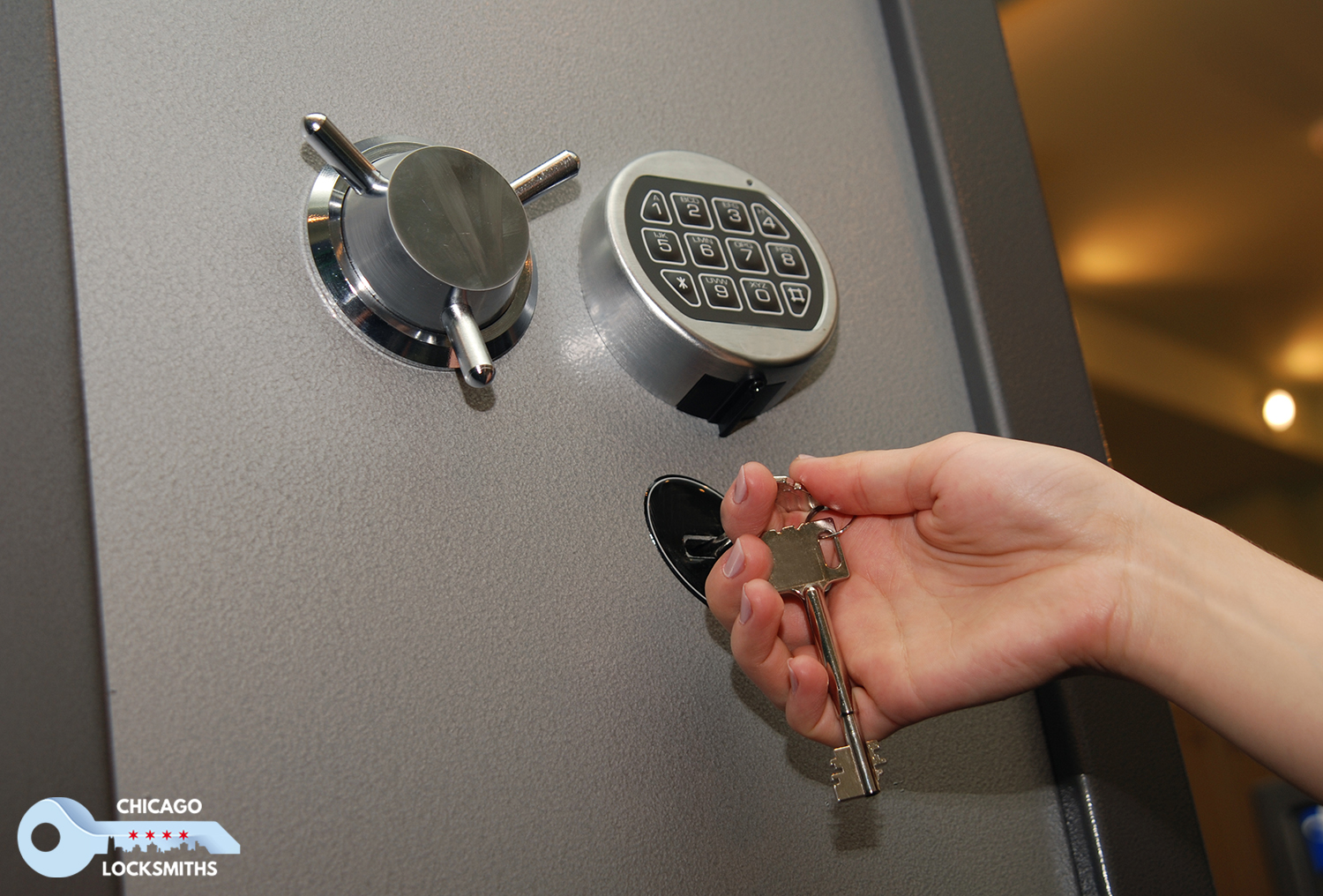Buying a home safe can be a confusing process due to the massive amount of safes available on the market today. The huge variety of price ranges, makes, and models can be overwhelming for the average consumer. In this blog post, the safe and security experts at Chicago Locksmiths will help you figure out the right steps to take when figuring out what home safe to purchase.
Brand Awareness
Avoid brands that are known to be low quality. These brands are usually the top results on Amazon or Walmart due to their cheap cost – since they are cheap to manufacture, due to low quality construction. You don’t necessarily need an army grade safe, but you’ll want to at least buy one that offers a good level of protection. Look up the average reviews for the brand of the safe you’re looking into, as well as their rating in security journals.
Door and Body Distance
Look at the distance between the safe door and it’s body. If it’s a wide gap, skip that safe. That gap can be used as leverage for burglars to pry the safe open, or attack the bolts securing the door in place. Make sure that you choose a safe with a tight connection between the door and body, as well as making sure not to choose one that has lots of unfilled pre-drilled mounting holes.
Welding
Make sure that a safe is welded with a continuous process rather than simply spot welded. Spot welding can be…spotted through a circular dimple that varies in size and distance. Continuous welds melds two pieces of metal across their entire overlapping line. Spot welding is a cheaper process, but it’s also much easier for burglars to overcome it. Invest in a continuously welded safe.
Dial Types
You can get a safe with a manual and/or digital dial. They both have pros and cons. Digital diles allow for fast combination entry, easy operation, and easier password changes – while also being vulnerable to power loss, moisture, electromagnetism, and potential digital overrides. Manual dial safes last a long time, are hard to manipulate, can be decoded by licensed professional locksmiths – but also take a much longer time to unlock, use specific technical methods for opening that might take time for the average person to master, and takes a long time for codes to be changed. Make the choice based on your own level of skill, comfort, and security needs.
Key Overrides
Many types of safes allow for a key to be used in it rather than the safe combination, leading to the important need for key control – as keys can be lost, stolen, or even copied by an unauthorized party. Keyways can also be picked by burglars, making safes vulnerable in a totally new way. However, key overrides allow you to open up your safe even if it’s combination is forgotten. If you choose to opt for a safe with a key override function, make sure to keep the key in a stable, secret, constant place.
Fire Rating
You want to make sure that your safe is fire rated to withstand heat for a long amount of time. Fire rated safes are available in many varieties – some that can withstand lower heat for longer amounts of time, and those who can withstand double the heat for half the time. Since the average home fire burns at a heat of 1,100 Fahrenheit, a safe fire rated to last at 350 Fahrenheit for 90 minutes doesn’t seem too appealing. Make sure that your safe as as high as a fire rating, as well as security (forced entry/burglary resistance) rating as possible.
Metal Thickness
One of the most important safe variables, safe thickness determines a safe’s true level of security and potential vulnerability. The thicker and stronger the metal, the more secure your safe is. Steel gauge safes are stronger the lower the gauge number is – so 5 gauge steel is stronger than 9 gauge steel, and etc… Any safe that’s at a gauge level that’s above 12 shouldn’t even be called a safe; it’s simply a lockbox. Make sure to choose a safe with the thickest metal content possible for your budget.Safes, Safe Tips, Security, Residential Security, Commercial Security

